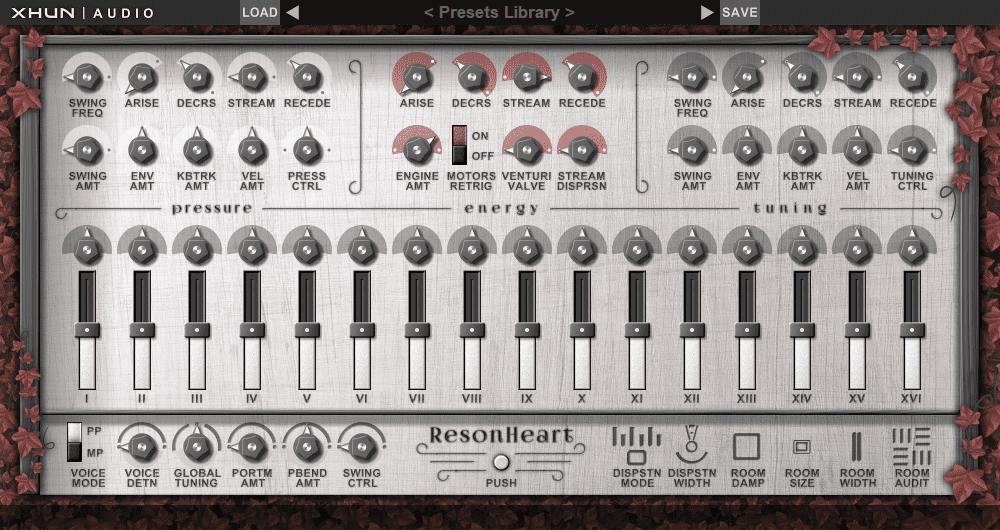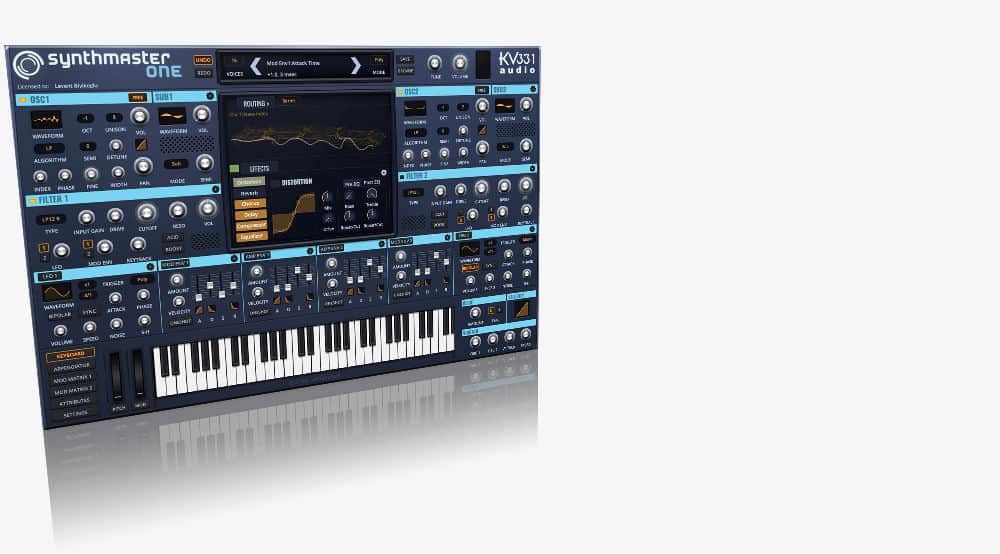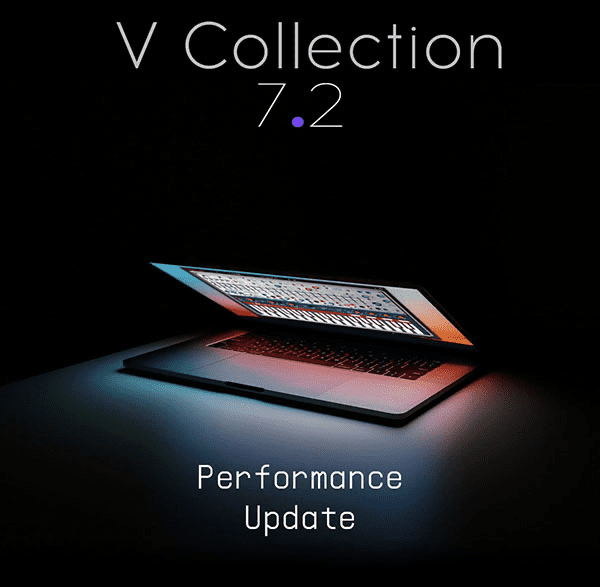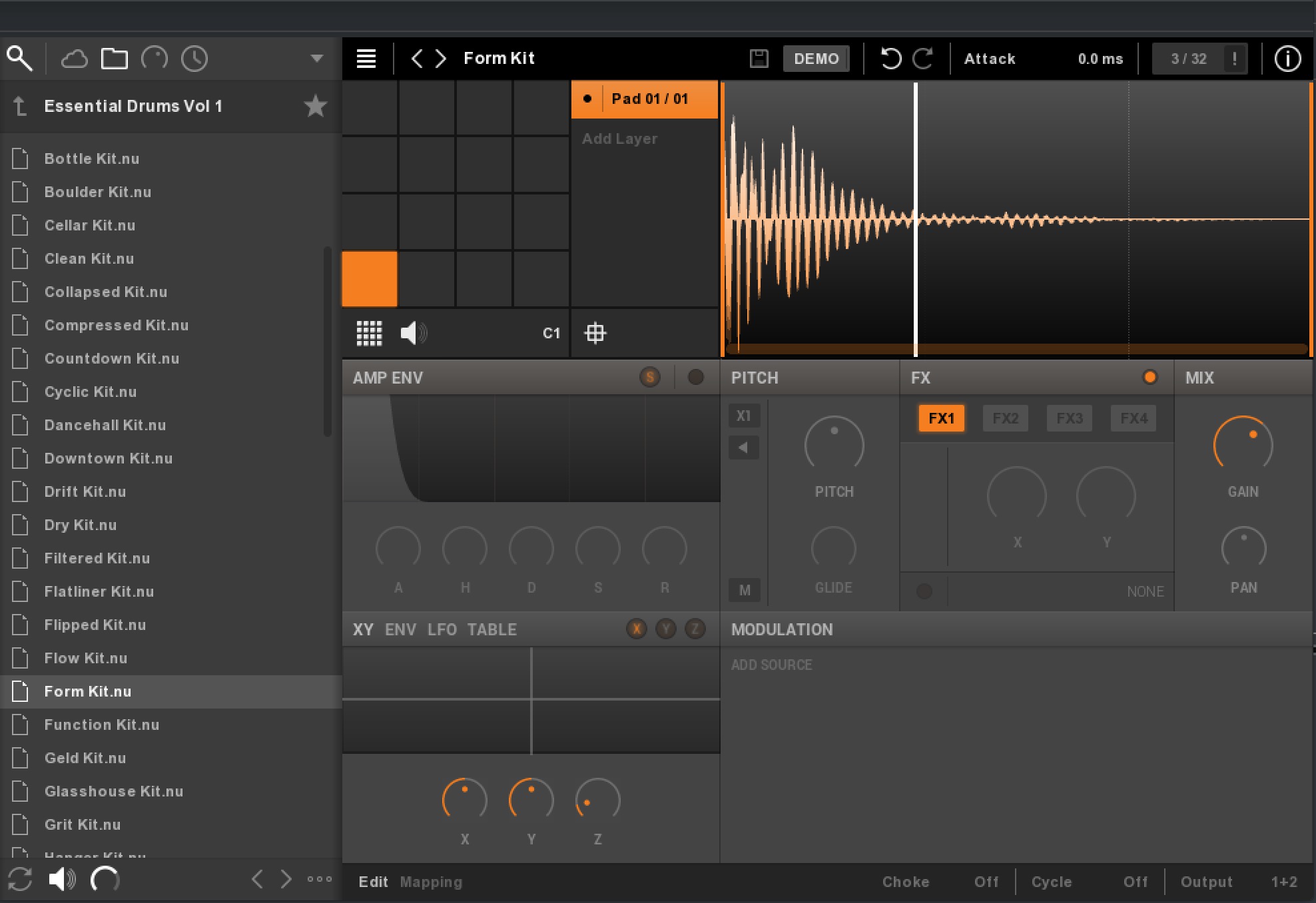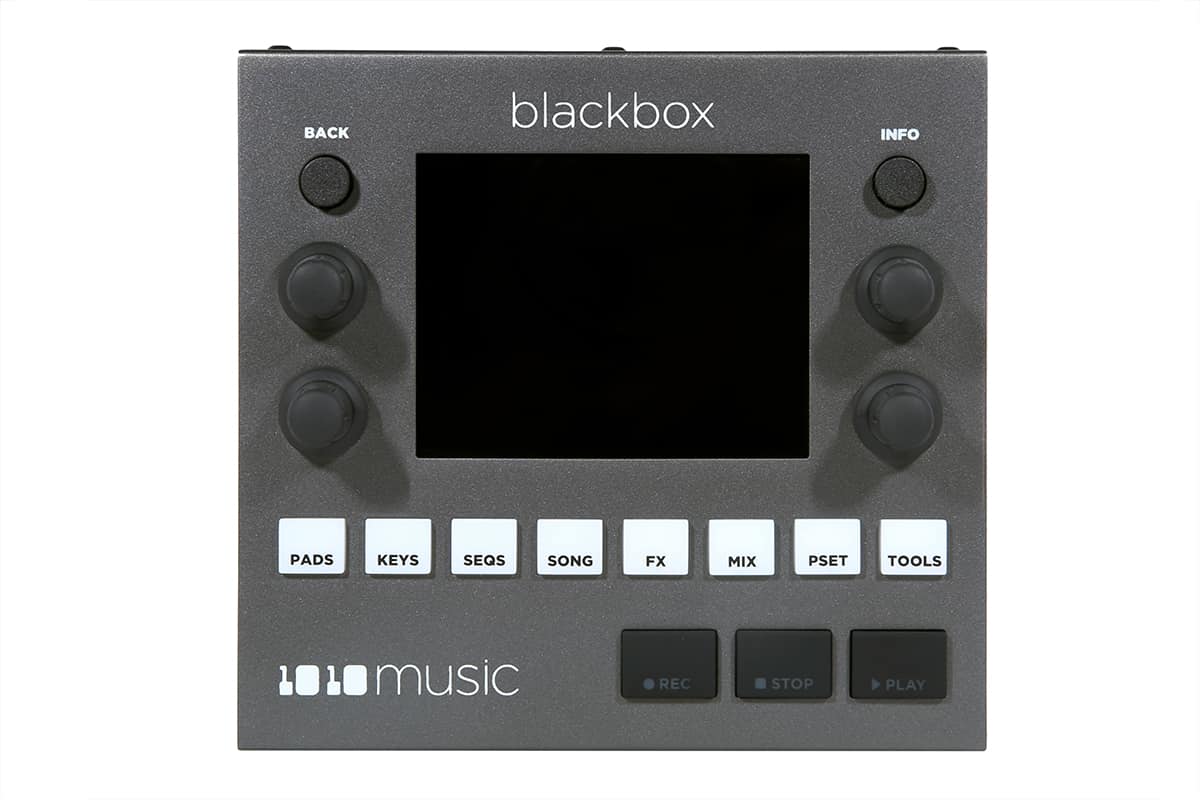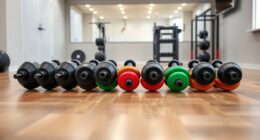ResonHeart is the physical modeling simulation of a never seen before, experimental, aerophone-based acoustic instrument.
Characterized by a complex model-based architecture, this original machine has expressly been built to mimic the sound of different families of acoustic instruments – like winds, membranes, chromatic percussions, ethnic lutes and whistles, glasses, cymbals and crashes, vocal ensembles and choirs, or even an entire orchestral strings section – as well as to produce very unconventional, organic tones, evolving textures and expressive motion pads.
Built as a virtual instrument through the use of physical modeling techniques (ACS), ResonHeart has to be considered as a natural-born acoustic machine made of clockwork components, air pumps, motors, pneumatic valves and complex resonator blocks (one per voice).

Advanced Component Simulation
Advanced Component Simulation (ACS) represents a set of technologies adopted by Xhun Audio to faithfully simulate the physics, architecture and behaviour of electronic, electro-acoustic and acoustic components that can be found inside a musical instrument or effect – like an analogue synthesizer, a tape echo unit, an electric guitar, a french horn, a violin, etc.
This approach allows the components to be modeled after their original architecture, preserving their physical properties – including their own micro-imperfections and instabilities. Instruments and effects built by using the Advanced Component Simulation (ACS) approach will naturally prove a higher degree of genuineness and accuracy.
ResonHeart Features
- Physical modeling simulation of a complex acoustic sound generator machine, achieved by the adoption of the Advanced Component Simulation (ACS) approach
- Full 64-bit processing accuracy for every single aspect of the simulation
- A 100% original aerophone-based mechanical acoustic instrument, featuring an articulated modal architecture and capable of mimicking other acoustic instruments’ tones and flavors
- Entirely made of mechanical components (resonators, motors, valves) which have been modeled after existing, commercially available parts
- Air pump motors with dedicated automation and retrig control
- Venturi valves
- Swing motors and valves (from 0.1 Hz up to 20 Hz)
- Pneumatic solenoid valves (with a 3-ms aperture, 2-ms disclosure timing)
- Air turbulence dispersion control
- A complex resonator block (one per voice) made of sixteen universal Helmholtz resonators, each with independent tuning (internal volume) and pressure (embouchure) controls
- A dedicated modulation for resonators’ tuning, featuring Swing, Contour, Velocity and Pitch Follower controls
- A dedicated modulation for resonators’ pressure, featuring Swing, Contour, Velocity and Pitch Follower controls
- Operates as a monophonic or polyphonic (4-voices) instrument
- True polyphony, achieved by simulating separate, fully-independent mechanical sound generators
- Separate controls for global tuning, voices detune (spread), pitch bending (amount) and portamento
- An accurate room/hall simulation (resonator-based)
- A spatial displacement engine, arranging the instrument’s four voices/blocks inside the room space
- Including a 130+ ready-to-use factory presets collection, covering different styles and genres, including deep and solid basses, real-world cymbals and crashes, membranes, and percussions, woodwinds, plucked strings, ethnic bells and whistles, organic motion pads, symphonic strings and choirs sections, evolving soundscapes, psychoacoustic sound effects and more
- MIDI automation
- Support for sample rates from 44.1 kHz up to 192 kHz
- Available in multi-size GUI resolutions

